WiFi has been necessary and greatly helpful in our daily life. However, a slow WiFi can be a big annoyance. Sometimes you can not even open a webpage on the browser when your WiFi slows to a crawl. There are several common reasons causing the slow WiFi.
Why is my WiFi so slow? There are various reasons why your WiFi is slow. It’s likely that your Internet service plan is not appropriate for you, or your WiFi signal is weak. Maybe there is something wrong with your WiFi router. It’s sometimes hard to troubleshoot the problems. But don’t worry. We’ve got you covered!
This article outlines the best 5 solutions to fix the slow WiFi. Read on and troubleshoot the problem to easily solve it step by step.
Try these fixes:
- Check with your ISP
- Troubleshoot the hardware issues
- Turn off bandwidth hogging plugins and applications
- Choose a new DNS server
- Update your WiFi adapter driver
Solution 1: Check with your ISP
If your WiFi slows all of a sudden, first of all, you can run a speed test to see if it matches with your plan. You can do the speed test on some websites, such as speedtest.net.
If the speed matches with your plan, then your network is working fine, and you can upgrade to a new plan to have a faster WiFi connection. If it doesn’t, you can call your ISP (Internet Service Provider) to see if there is something wrong, or you can also follow the instructions below to have a try.
Solution 2: Troubleshoot the hardware issues
One of the common reasons is the hardware issue, including the router’s position and frequency interference, etc. and these issues are always the killers of the high-speed WiFi.
Sometimes a good network router can guarantee you a great Internet connection and prevent unnecessary WiFi problems. So be sure to pick up a good WiFi router on the Internet.
Reboot your WiFi router
This perhaps is one of the most famous fixes in all of technology issues, and also helpful for many times. During a reboot, routers are pretty good at finding channels with less traffic, thereby raising their WiFi speeds.
1) Unplug your WiFi router from the power source.
2) Wait for at least one minutes.
3) Plug your WiFi router to the power source.
4) Try the WiFi connection again to see if it gets faster.
Tips: To schedule your router to regularly reboot would be a good idea, and it also saves your time to turn the router off and on again and again. Just open the router settings on the browser and you can set it up.
Check the router position
Many people does not recognize the importance of a good router position. A slight change of the position can make a difference for the WiFi speed and WiFi signals.
People always put the router in a corner in most cases. However, that doesn’t make full use of the router. As we all know, the further away from your router, the weaker your WiFi signal is. Therefore, it’s crucial to have a good router position to make sure it can be reached as much as possible.
In a word, put the router as high as possible to extend the broadcasting range, and put the router to a relatively central position so that every part of the area can accept the WiFi signals.
Meanwhile, the obstacles, such as concrete and metal material can block the WiFi from being connected, so make sure your router isn’t blocked by any big and thick objects.
In addition, you can buy a WiFi Ranger Extender (WiFi Booster) to enhance WiFi signals and boost your WiFi speed.
Select a suitable WiFi frequency and channel
This can be a problem in the crowded neighborhoods or apartments. When too many people connect on the same WiFi channel at the same time, the WiFi performance will be significantly impacted. So if your WiFi always slows down when everyone gets off work, that’s a sign of congestion.
Usually WiFi network frequency has 2.4 GHz and 5 GHz. Channel congestion most likely happens when routers can only broadcast at 2.4 GHz or if you have devices can only work with 2.4 GHz frequency. Thus there are only 11 channels available to choose. Among these, only channel 1, 6, 11 are most commonly used.
Therefore, you can manually choose to broadcast at 5 GHz if your router is dual band. Now many routers are dual-band model and both support 2.4 GHz and 5 GHz. If your router only supports 2.4 GHz, you can also try another channel to get a better WiFi performance. Follow the instructions to set it up (Here we take a TP-link WiFi router as an example):
1) Go and see the IP address, Username and Password on your wireless router.
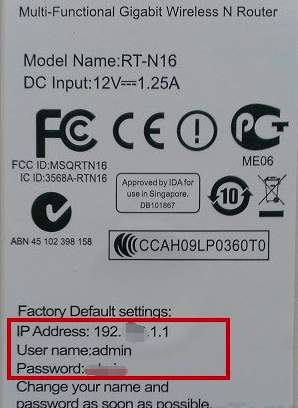
2) Open your browser on PC or mobile phone, then type the IP address in your browser, and press Enter.

3) Type your Username and Password, then click Login.
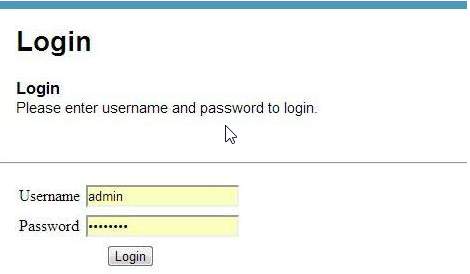
4) Go to Wireless and click Wireless 2.4 GHz or Wireless 5 GHz, and change Channel to a less-crowded one.
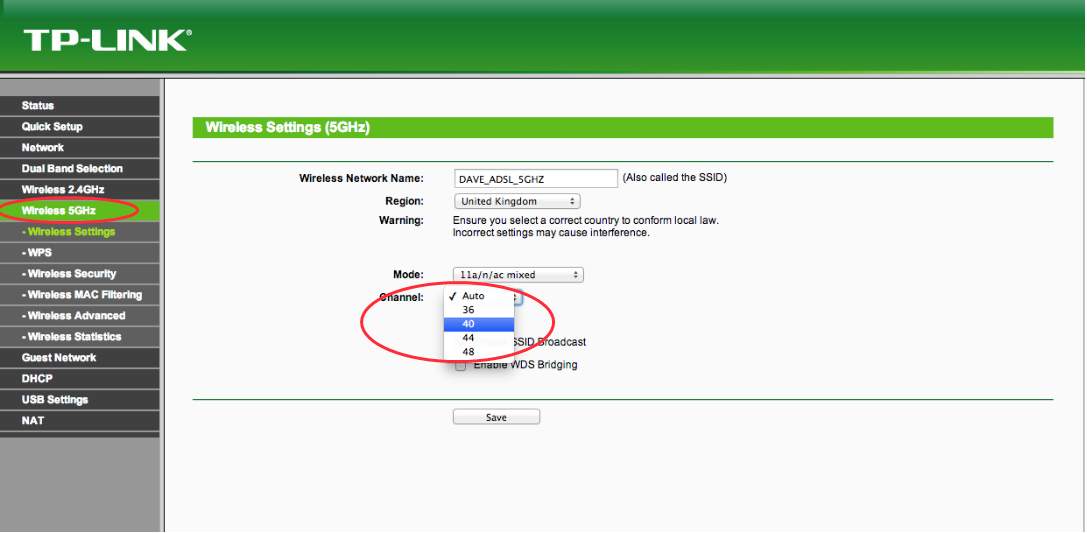
5) Try your WiFi connection again and see if it works faster.
Check the router interference
The WiFi signals can be interfered by many household devices, such as your cordless phone, microwave oven, Bluetooth speaker, etc. because they use the same 2.4 GHz or 5 GHz frequency as your WiFi does. So you can check these devices to see if it’s where the problem lies in.
1) Turn off those devices, and unplug the power source.
2) Try to connect your WiFi again, and see if it works better.
3) If the problem solves, it seems to result from the device interference. Then move your WiFi router to another place, so they are not in the same light with the household devices.
Solution 3: Turn off bandwidth hogging plugins and applications
After troubleshooting your hardware and they are all working well, it is likely a problem of bandwidth hogging applications and plugins.
Bandwidth hogging is a slang term for Internet users who use substantially more bandwidth under the same network. For example, if you are running applications like Google drive, Dropbox, or Onedrive to upload/download files, or if your brother is watching Netflix on his computer, the WiFi would obviously slow down, especially when searching on the browser. Just stop running those applications or streaming the video, or wait for it to finish, and your WiFi will become faster.
Similarly, you may need to use extensions like Adblock Plus to prevent the ads from using up your Internet.
Solution 4: Choose a new DNS server
A DNS server includes a database of IP addresses and related hostnames, and they translate the domain names to IP addresses that the computer recognizes as requested.
By default, your router uses your ISP’s DNS servers, but it’s not always the fastest. Usually, the fastest DNS server is the one that’s physically closest to your location. Assuming you know something about the router configuration, you may want to consider changing your DNS for the router.
Tips: Make sure to enable DHCP for your router and your computer before you choose a new DNS server.
Follow these steps to change your DNS server. Here we take a TP-Link router as an example:
1) Open your router’s web interface via the step 1, 2, and 3 above in Solution 2.
2) Go to DHCP > DHCP Settings, and type the DNS server for Primary DNS and Secondary DNS. Then click Save.
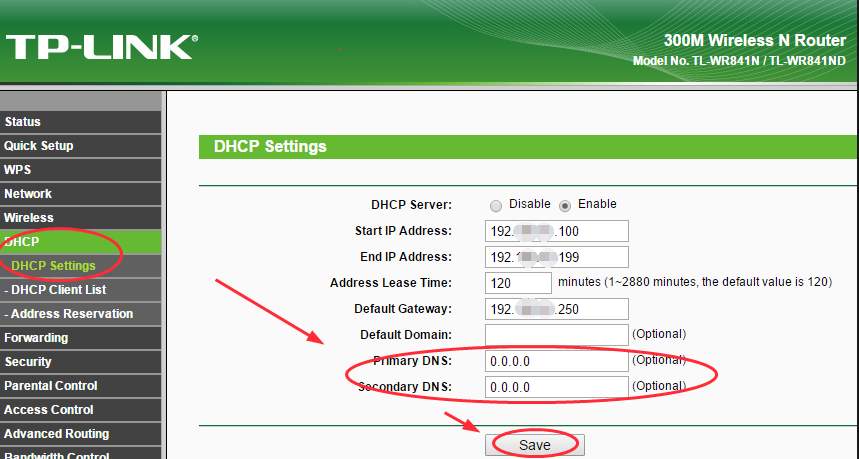
3) Try your WiFi again to see if it gets faster.
Solution 5: Update your WiFi adapter driver
If you can not identify the problem on hardware issues or the bandwidth hogging software, it can be a problem caused by the outdated or missing WiFi adapter driver. Just find the correct driver you need on the Microsoft website, then download it in your computer.
If you are not familiar with playing around with driver issues, you can do that with Driver Easy.
Driver Easy will detect the drivers condition in your computer, and install the correct drivers for your PC. More importantly, with Driver Easy, you don’t need to struggle figuring out the Operating System, and you don’t need to worry about making mistakes while processing. That will tremendously save your time and patience.
You can update your drivers automatically with either the FREE or Pro version of Driver Easy. It only takes 2 simple clicks with the Pro version (and you will get full support and a 30-day money back guarantee).
1) Download and install Driver Easy.
2) Run Driver Easy and click Scan Now. Then Driver Easy will scan your computer and detect any problem drivers.

3) Click the Update button next to the driver name to download and install the correct driver (you can do that with the FREE version). Or click Update All to automatically download and install the correct version of all the problem drivers (you can do that with Pro version, and you will be prompted to upgrade when you click Update All).
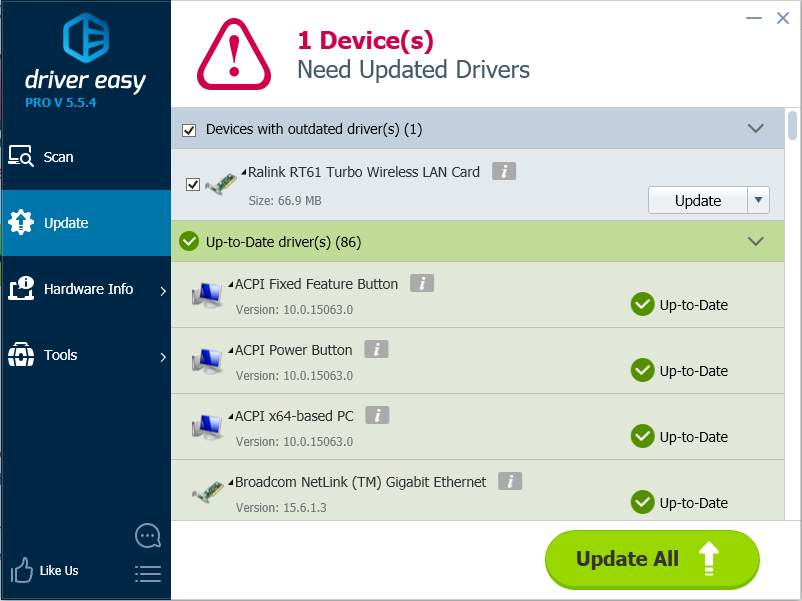
4) After updating the driver, restart your computer, then connect to the WiFi network to see if it solves your problem.
That’s all about it. What is your solution for this problem? Share with us! And if your problem still persists, feel free to comment below and we will see what more we can do.





